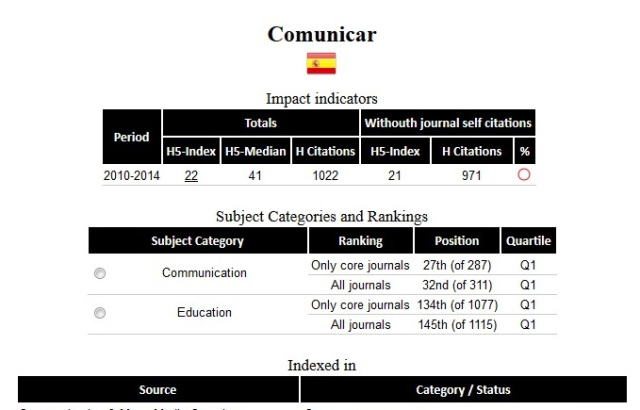Author: Raidell Avello Martínez – Translation: Erika-Lucia Gonzalez-Carrion
Citing article from the literature to support a research report to be published in a journal is a necessary practice. The inclusion of pertinent, correct and precise cites allows the author to locate the work that is presented in the state of the art of knowledge in the theme of the article. Within this necessary cites there are found the self cites that are those cites that the author or authors make to their own works.
Regarding this issue, there are various positions; in the extremes there are some people who think that it is quite unseemly to cite the person by itself, claiming that this is an infamous self-promotion of their works. At the other side are those who believe that they should not mention to others rather than themselves, arguing that their jobs are the most important of the area, and within these extremes there emerge several intermediate positions. It is true that the cite of a work is a recognition of scientific value (negative sometimes, but valid too) of a published work, which forms the basis of the new that is presented, then for that reason the self citing is equivalent to self-recognizing the value of our work that others should do.
But sometimes the self citing is necessary when: the works published before, by the author himself or herself (above all when he or she individually or the research group to which belongs has been researching and publishing in an area many years), are really important in the area of knowledge where the author works and provides part of the theoretical bases or new work practices; or the works belong to a same research which is being published by stages.
In this sense, there are elements that are criticized by the scientific community on this phenomenon, one of them is when the proportion of self citing is very high with respect to the number of references, there is not a widespread percentage allowed, although there may be some indications on the rules of each magazine, as it is the case of Comunicar, which sets out: «Should be limited, however, and control the saturation of self-citing of the author and of this magazine…» Without intention, of establishing a number, in my opinion, self-citing should not be more than 5-15% of the total number of references of the work. Another element is the unjustified self-citation, that is, when are cited previous works that have no relationship, or it is very scarce, with what is proposed in the text, or that can even have a relationship, but it is unnecessary to make a cite and is kept in evidence the attempt to self-promote their work and win the so, increasingly, precious cites and academic prestige.
Some institutions dedicated to the study and analysis of the impact of publications have devised ways to deduct the self-citing to analyze in a clearer and more objective way the impact of a particular article.
Self-citing has its effects also at the level of magazines; in this are the cites that receive the articles of a magazine for their own articles. To this phenomenon are applied the previous comments. In fact, it is one of the indicators that main database calculate as part of the metrics that generate citations. As examples, we can mention the Journal Scholar Metrics service that offers Infoec3 based on data from Google Scholar, as well as the main bases: Journal Citation Reports (JCR) Web of Science and Scopus, among others. These bases commonly penalize excessive behaviors of self-citing and can even remove magazines of its indexes.
In the case of Comunicar journal in Journal Scholar Metrics (Figure 1), it shows that 94% of the received cites are external, only 51 of 1022 accounted cites are considered self cites.

The same occurs to the service of Scimago Journal & Country Rank, Figure 2, where the behavior is similar with respect to the proportion of the self cites and the total number of cites.

In summary, the authors should analyze well when it is really necessary to cite a previous work and enrich their references, as it is logical, with other authors, and is even obliged to, if he or she self cites, criticize the results with the same rigor that criticizes others. On the other hand, the editors of scientific journals should pay particular attention to this issue, and ensure and control, with the help of the reviewers that there is not an abuse of self-citing, both at a level of author and magazine, and that these are relevant and well justified. In any case, we should not forget that what usually makes that a manuscript is accepted for a publication and then to be very cited is its scientific-methodological rigor as well as the relevance of its results and conclusions.
Source of the first image: www.insidehighered.com/sites/default/server_files/styles/medium/public/media/iStock_000007032716_Large.jpg?itok=1YqQjDx0

